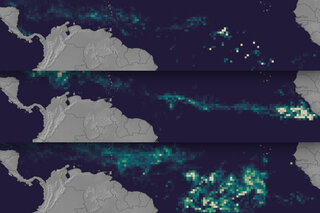To better care for our Earth and mitigate the effects of climate change, we must first look to the ocean. This Earth Day, NOAA invite you to learn more about contributions to the global ocean observing system.
The new coral tree will be kept and maintained in a coral nursery off Key Biscayne, to provide a consistent coral supply for experiments conducted at the Experimental Reef Laboratory. A supply of naturally grown corals will greatly enhance the research capabilities of our Coral Program scientists.
An international study finds methane emissions from oil and gas activities over 2010–2019 were 70 percent higher than previously estimated by the US Environmental Protection Agency. But the study also finds the rate of methane emissions fell slightly over that period.
Green infrastructure mimics natural processes and can mitigate impacts of urban development and climate change, but uncertainties remain about its effectiveness. A new open-source tool may help decision makers.
On Friday, April 7, 2023, NASA launched the Tropospheric Emissions: Monitoring of Pollution (EVI-1) (TEMPO) satellite mission from the Kennedy Space Center. TEMPO will provide high resolution air quality data on an hourly basis across North America.
The National Integrated Heat Health Information System (NIHHIS) will hold its second annual meeting April 25–27, 2023. Registration is now open.
Registration is open for the Climate Variability and Predictability Program webinar series on Decadal Climate Variability and Predictability.
Since the start of the Industrial Revolution in 1750, the ocean has absorbed 20–30 percent of the new carbon dioxide emissions. That has mitigated rising atmospheric temperatures but increased ocean acidification. A new data set spanning 1750–2100 predicts future ocean chemistry.

